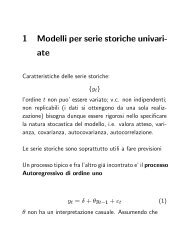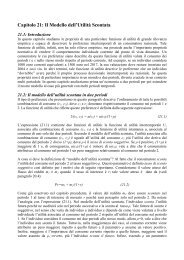1 Modelli per serie storiche univariate
1 Modelli per serie storiche univariate
1 Modelli per serie storiche univariate
You also want an ePaper? Increase the reach of your titles
YUMPU automatically turns print PDFs into web optimized ePapers that Google loves.
Per convenienza di solito si riscrive il modello come<br />
dato che<br />
∆yt = δ + (θ − 1) yt−1 + εt<br />
yt − yt−1 = δ + θyt−1 − yt−1 + εt<br />
e si sottopone a test H0 : (θ − 1) = 0. Nota che questa specificazione e’ robusta a<br />
problemi di autocorrelazione dei residui.<br />
Di solito siamo interessati a 2 casi in particolare:<br />
1. Processo stazionario attorno ad una intercetta<br />
si procede con un F − test<br />
yt = δ + θyt−1 + εt<br />
H0 : Random Walk<br />
H1 : Stazionario con intercetta<br />
∆yt = δ + (θ − 1) yt−1 + εt<br />
H0 : δ = (θ − 1) = 0<br />
2. Processo stazionario attorno ad un trend con intercetta<br />
H0 : Random Walk<br />
yt = δ + θyt−1 + γt + εt<br />
H1 : Stazionario ad un trend con intercetta<br />
∆yt = δ + (θ − 1) yt−1 + γt + εt<br />
H0 : δ = (θ − 1) = γ = 0<br />
Nota che poiche’ i test di radice unitaria hanno potenza piu’ bassa dei test di<br />
significativita’ dei coefficienti e’ stata proposta una alternativa: il KPSS. Questo<br />
test si basa sull’idea che ogni <strong>serie</strong> storica e’ una somma di un trend deterministico,<br />
un random walk e un termine d’errore stazionario. Sotto H0 di processo stazionario<br />
attorno ad un trend o no<br />
6<br />
(2)


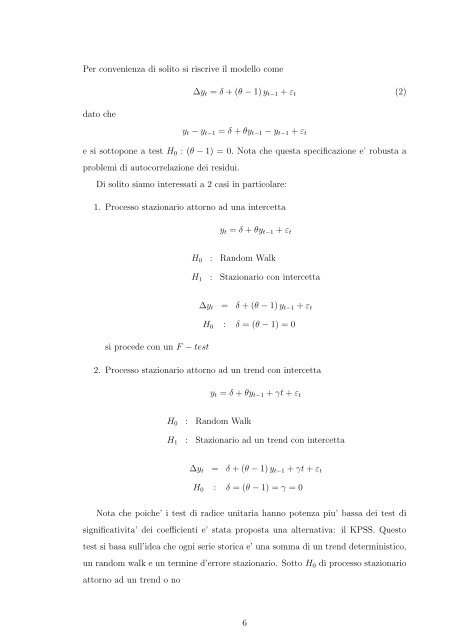
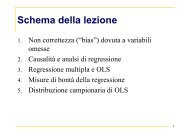
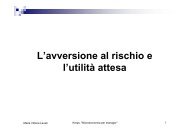

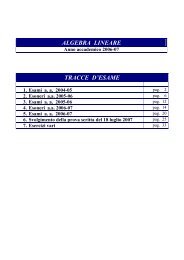

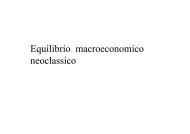
![[ ]](https://img.yumpu.com/14935362/1/184x260/-.jpg?quality=85)
